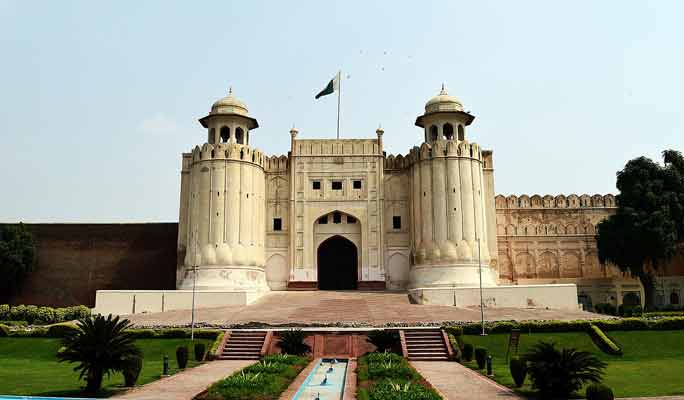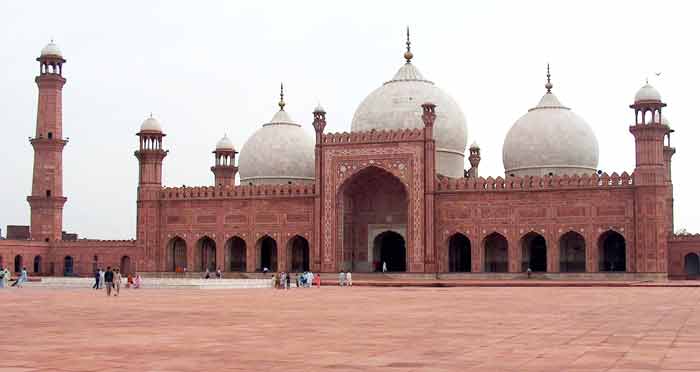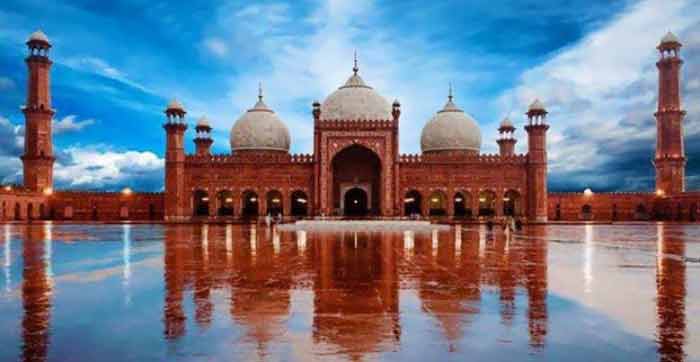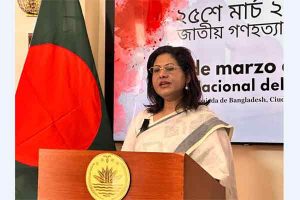
Md Manzurul Alam : There are very few cities around the globe that feature a brilliant amalgamation of contemporary feel and culture and historical significance. Lahore is one such city, also known as the ‘heart of Pakistan’. Chock-full of culinary delights, historical monuments dating back thousands of years, and culturally rich bazars, Lahore is also an economic, entertainment and educational hub of Pakistan.
Lahore is the capital city of Punjab Province of Pakistan. With the population of approximately 12 million it is a lively city. The main attraction of the city is its beautiful architecture and bustling bazars. The tradition of buildings is centuries old in Lahore but the Moghuls (1500AD to 1800AD) have contributed the most to it.
According to a legend Lahore was known in ancient times as Lavapuri (“City of Lava” in Sanskrit), was founded by Prince Lava or Loh, the son of Rama, the Hindu deity. To this day, Lahore Fort has a vacant temple dedicated to Lava (also pronounced Loh, hence Loh-awar or “The Fort of Loh”).
Ptolemy, the 2nd-century Egyptian astronomer mentions in his Geographia a city called Labokla being somewhere between the Indus River and Palibothra, (Patna). It was described as extending along the rivers Bidastes or Vitasta (Jhelum), Sandabal or Chandra Bhaga (Chenab), and Adris or Iravati (Ravi).

The oldest authentic mention of Lahore appears in Hudud-i-Alam (The Regions of the World) written in 982. In this document, Lahore is mentioned as a shehr or town inhabited by non-muslims having “impressive temples, large markets and huge orchards.” It refers to “two major markets around which dwellings exist,” and it also mentions “the mud walls that enclose these two dwellings to make it one.”
Although Lahore does not have an ancient history but Some historians & archeologists trace the history of the city as far back as 2000 BC. The famous Chinese pilgrim Hieun-tsang has mentioned Lahore in his writings of 7th century.
The true essence of Lahore lies in exploring the varied flavours the city has to offer. The interesting divine between ‘Old Lahore’ and ‘Modern Lahore’ unveils not only great historical gems, but also state-of-the-art shopping malls and entertainment centres. From Lahore Fort to Data Darbar, streets of Bhati Gate to Anarkali Food Street, Lahore has numerous attractions for visitors.
The first place that one must hit in Lahore is the MM Alam Road that runs from the Main Market to Firdous Market. For a traditional and up-to-the-minute café culture, MM Alam Road has it all stitched up with its earthy charms and artful community. There’s great mix of most traditional restaurants and eclectic cafes; art, culture, food and fun amalgamate here. The area hosts plethora of eateries.
A drive down the Mall Road, the popular Alhamra Art Centre greets visitors where literary and artistic evenings charm many. An interesting double-decker bus tour that commences from Gaddafi Stadium whizzes down Mall Road where many historical structures including National College of Arts, Botanical Gardens, Lawrence Gardens, Lahore Gymkhana, Lahore High Court, Wapda House amid several historical marvels with their true intrinsic flavor can be seen.
The historical charm of Lahore comes in many forms; one being visiting the grand mosques of Lahore. One of the most beautiful mosques of the Mughal Architecture, Badshahi Mosque was built by the famous Mughal Emperor Aurangzeb in 1674. The majestic Badshahi Mosque in Lahore is one of the most stunningly beautiful sacred sites for Muslims. Considered to be an epitome of beauty and splendor, this mosque is the second largest in Pakistan and fifth largest in the world.

This mosque was the world’s largest for over 300 years until the Faisal Mosque was completed in 1986. Its huge courtyard, which stretches over an area of 26,000 square meters, remains the biggest in the world, and can host up to 95,000 worshippers. The mosque’s external walls are clad with red sandstone panels, painstakingly sculptured with beautiful, lotiform motifs and embellished with marble inlays. As per tradition, the mosque has four minarets and three domes, the central one bigger than the other two. These are coated with white marble, which creates a striking contrast with the dominating red. This landmark is also a part of the UNESCO’s World Heritage Site.
Equally mesmerizing is the Wazir Khan Mosque, well-known as a ‘Mole on the cheek of Lahore’. This beautiful mosque covered with decorated tiles is a worth visiting place to see Indo-Islamic architecture. The Qashani tile work on the Wazir Khan Mosque seems like a direct contrast to the majesty of the Lahore Fort. Visitors can enjoy a kaleidoscopic view of glazed colourful tiles and the floral motifis of blue and green calligraphy.
The Lahore Fort, or the Shahi Qila is a wonder and one-of-a-kind Mughal structure. The origins of the Lahore Fort, a stronghold in Old Lahore, are so ancient that it’s impossible to establish precisely when the fort was first constructed. It is seemed that it was built on the wish of Mughal Emperor Shah Jahan in 1631-32 by Mirza Ghayas Baig, measuring 1400 ft and 1115 ft. It is known, however, that in the second half of the 16th century, the original mud-brick structure was demolished and rebuilt with burnt bricks. Since then, this fortified citadel has undergone numerous other modifications at the hands of almost all the rulers who reigned over Lahore, British colonialists included. As a result, it summarizes Pakistan’s amazing cultural heritage in the various artistic influences seen throughout its wide range of different buildings: mosques, mausoleums, palaces, audience halls, baths, watch towers, and more. A journey through Lahore Fort is in fact a journey through Pakistan’s past, and is for this reason recommended to anyone visiting the country.
Another iconic structure is the Sheesh Mahal, which is now part of UNESCO World Heritage. Constructed by Mughal Emperor Shah Jahan, this palace is located within Shah Burj block in the north-western corner of Lahore Fort.
The green sprawl of the Shalamar Garden, built in 1641 AD by Emperor Shah Jahan features 80 acres of magnificent gardens with terraces known as the Hayat Baksh (Life Giver), Faiz Baksh (Wisdom Giver) and Farah Baksh (Confort Giver) coupled with marbled fountains and structures.
A trip to Lahore can never be complete without seeing the famous Minar-e-Pakistan, a monument located in Iqbal Park that is a perfect representation of the ideology of Pakistan. Also an evening at the Wagah Border is a must while visiting Lahore. Here military practice is performed by both Pakistan and India which is an experience of its own.
For many, the shopping experience is one of the best things that a tourist can look forward to in Lahore. From megastores and markets including Hyperstar, Emporium Mall, Packages Mall and the Mall of Lahore, the city features plenty of experiences for shoppers.
Considered to be the oldest Bazar in South Asia, the Anarkali Bazaar is a place where one can see different yet beautiful fusions of everyday artifacts. The bazar is also a part of the rich Mughal Heritage and is named after the girl who was buried alive by most famous Mughal Emperor Akbar. From jewellery to embroidered items to quality leather to silk to footwear, the best of Lahore can be found in these markets.







